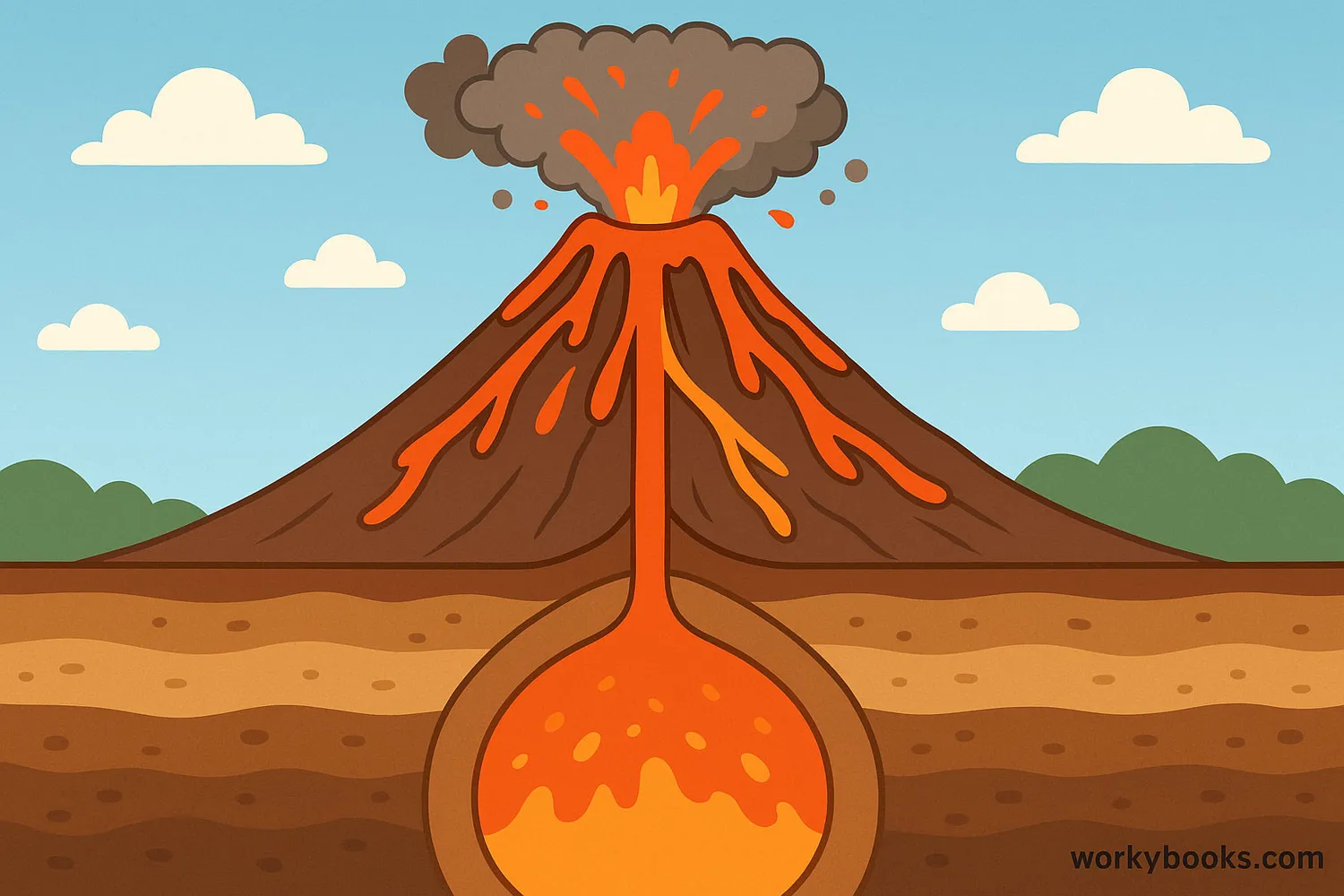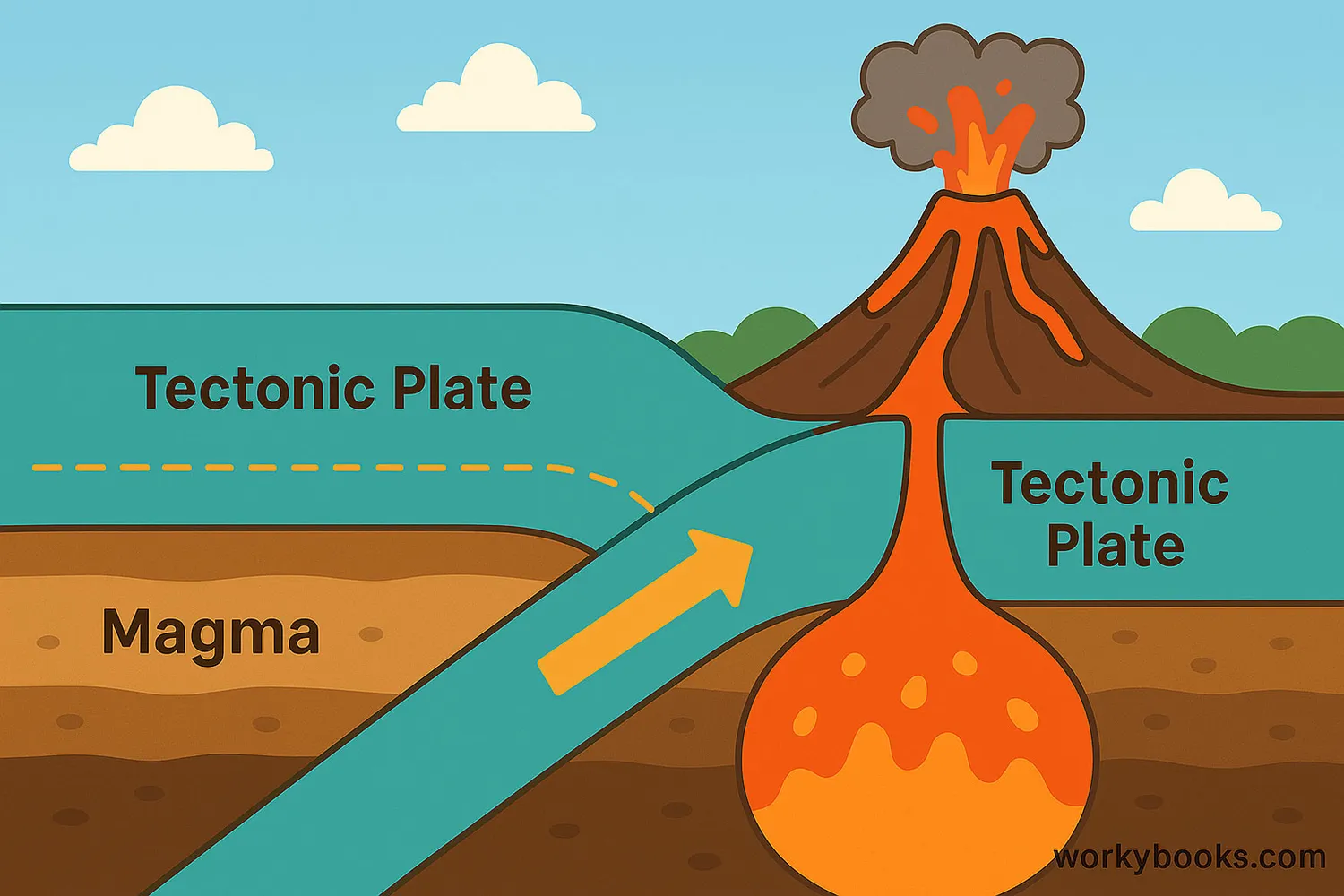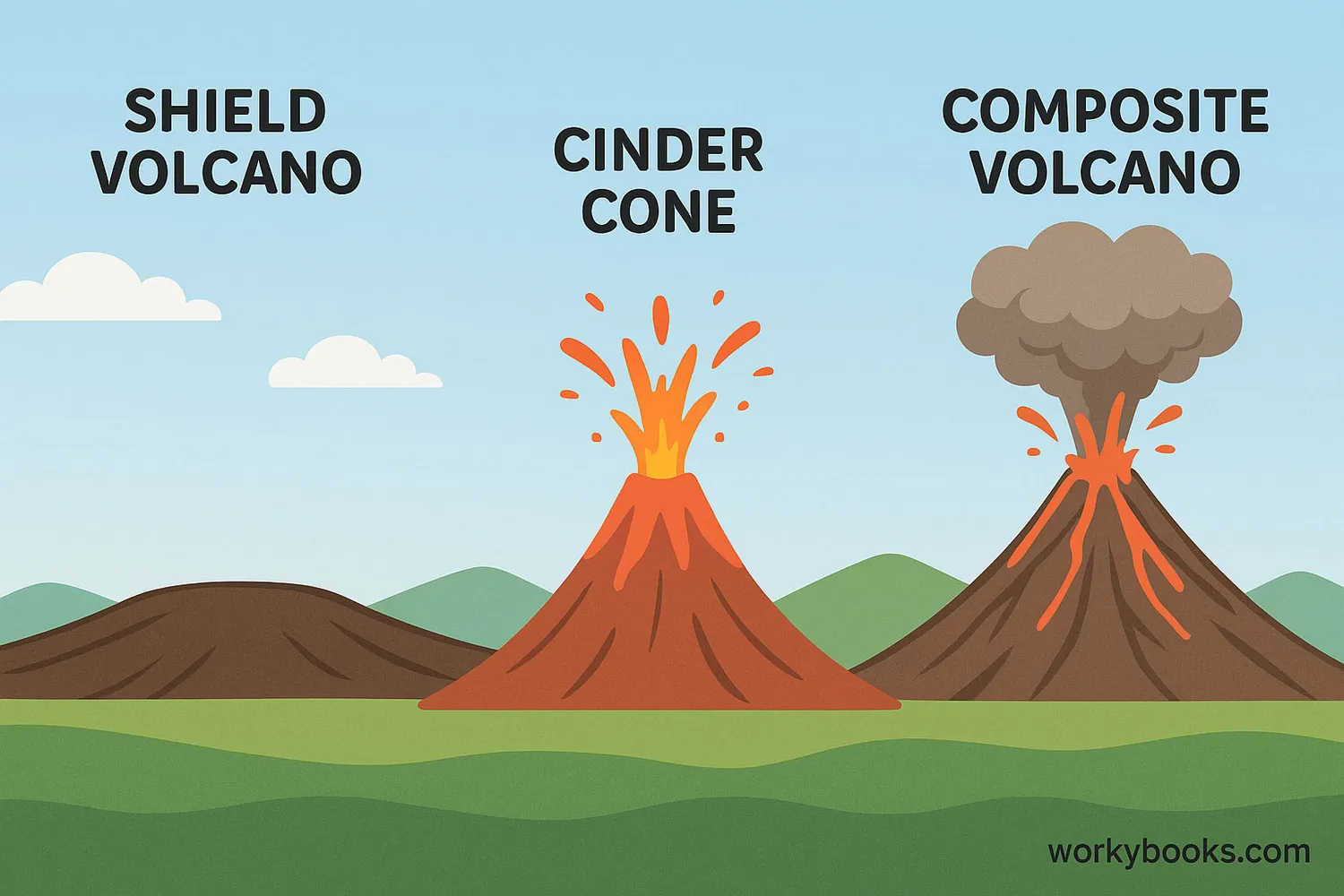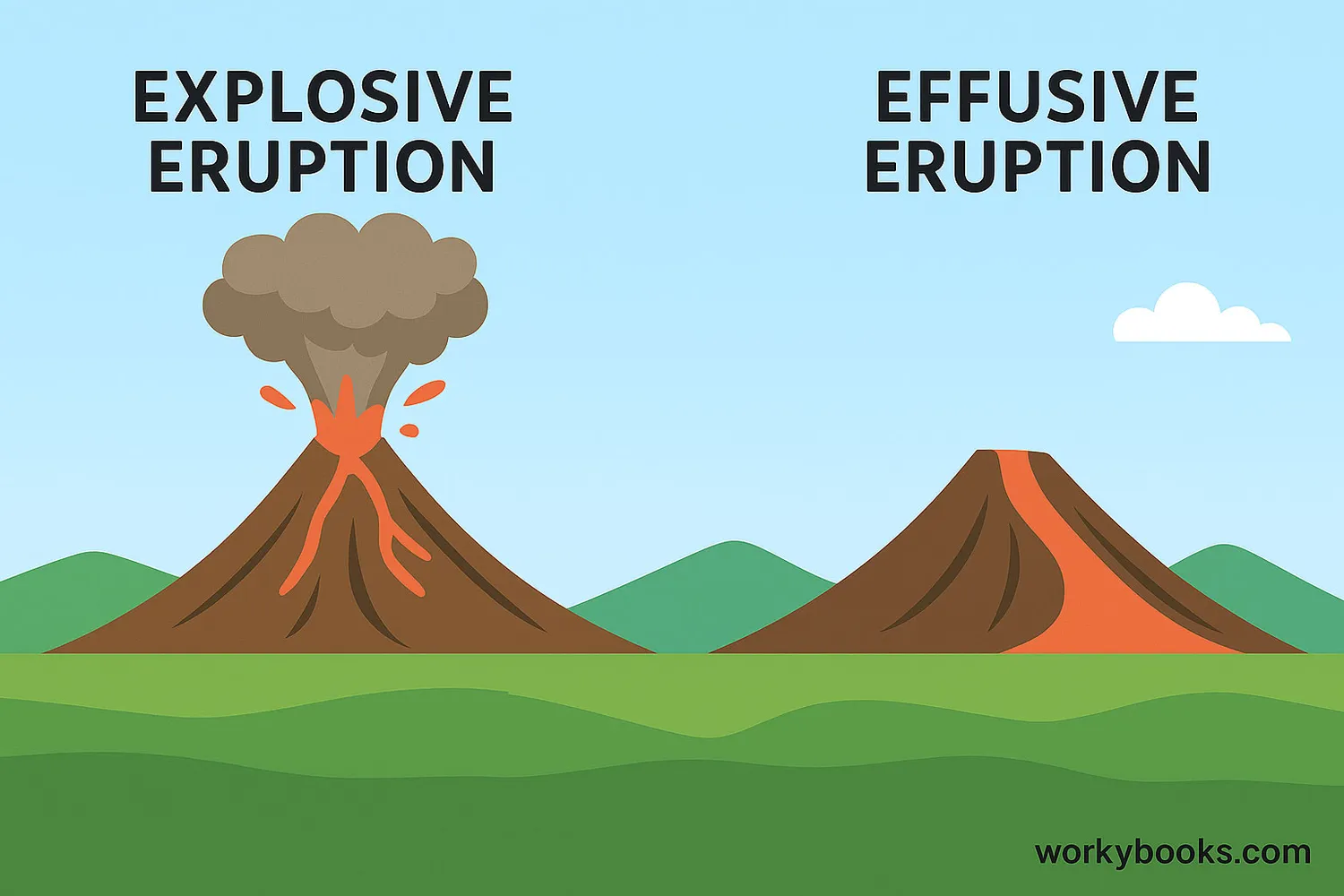Volcano - Definition, Facts, Examples, Quiz, FAQ, Trivia
Discover the powerful forces that shape our planet's surface
What is a Volcano?

A volcano is an opening in Earth's surface where molten rock, gases, and ash can escape from beneath the ground. Volcanoes are like nature's pressure valves, releasing energy from deep inside our planet.
When we talk about volcanoes, we often think of tall mountains with smoke coming from the top. But volcanoes come in many shapes and sizes, and they can even form under the ocean! The word "volcano" comes from Vulcan, the Roman god of fire.
Volcano Fact!
There are about 1,500 potentially active volcanoes worldwide, and about 50-70 erupt each year!
How Volcanoes Form

Volcanoes form where Earth's tectonic plates meet. Here's how it works:
Tectonic Plates Move
Earth's crust is made of giant plates that float on the mantle
Plates Collide
When plates push together, one slides beneath the other
Magma Forms
The sinking plate melts, creating magma that rises upward
Volcano Erupts
Magma reaches the surface, erupting as lava, ash, and gases
This process creates what we call the "Ring of Fire" around the Pacific Ocean, where most of Earth's volcanoes are found. Volcanoes can also form at "hot spots" where magma rises through cracks in the middle of plates, like the Hawaiian Islands.
Earth's Layers
Earth has three main layers: the crust (outer layer), mantle (thick middle layer), and core (center). Volcanoes bring material from the mantle to the surface!
Types of Volcanoes

Not all volcanoes look the same! Scientists classify volcanoes into three main types based on their shape and how they erupt:
Shield Volcanoes
Broad, gently sloping mountains formed by runny lava flows (e.g., Mauna Loa in Hawaii)
Cinder Cone Volcanoes
Steep, cone-shaped hills formed from explosive eruptions of ash and cinders
Composite Volcanoes
Tall, cone-shaped mountains with alternating layers of lava and ash (e.g., Mount Fuji)
Volcanoes can also be classified by their activity:
• Active volcanoes have erupted recently or are expected to erupt
• Dormant volcanoes haven't erupted in a long time but could in the future
• Extinct volcanoes haven't erupted in recorded history and aren't expected to
Volcanic Eruptions

Volcanic eruptions happen when pressure builds up beneath Earth's surface, forcing magma through openings in the crust. There are two main types of eruptions:
Explosive Eruptions
Violent eruptions that send ash, gas, and rock high into the air. These happen when thick magma traps gases.
Effusive Eruptions
Gentler eruptions where lava flows steadily from the volcano. These occur with thinner magma that allows gases to escape.
During an eruption, volcanoes release:
• Lava - molten rock that flows down the volcano's sides
• Ash - tiny rock particles that can travel great distances
• Gases - including water vapor, carbon dioxide, and sulfur dioxide
• Pyroclastic flows - fast-moving currents of hot gas and volcanic matter
Volcanic eruptions can create earthquakes as magma moves beneath the surface, and they can even affect Earth's climate by releasing particles that block sunlight.
Volcano Safety
Scientists monitor active volcanoes for warning signs like earthquakes, gas emissions, and ground swelling to help predict eruptions and keep people safe.
Volcano Quiz
Test your volcano knowledge with this quiz! Answer all 5 questions to see how much you've learned.
Frequently Asked Questions
Here are answers to some common questions about volcanoes:
Amazing Volcano Trivia
Discover some fascinating facts about volcanoes:
Largest Volcano
Mauna Loa in Hawaii is the largest active volcano on Earth. It rises 13,681 feet above sea level but extends another 16,400 feet below the ocean surface!
Hottest Lava
Lava temperatures range from 1,300°F to 2,200°F (700°C to 1,200°C). That's hot enough to melt most metals!
Volcanoes on Other Planets
Olympus Mons on Mars is the largest volcano in our solar system. It's nearly three times taller than Mount Everest and about the size of Arizona!
Ancient Eruption
The 1815 eruption of Mount Tambora in Indonesia was the most powerful in recorded history. It caused the "Year Without a Summer" in 1816, with snow falling in June in North America and Europe.




